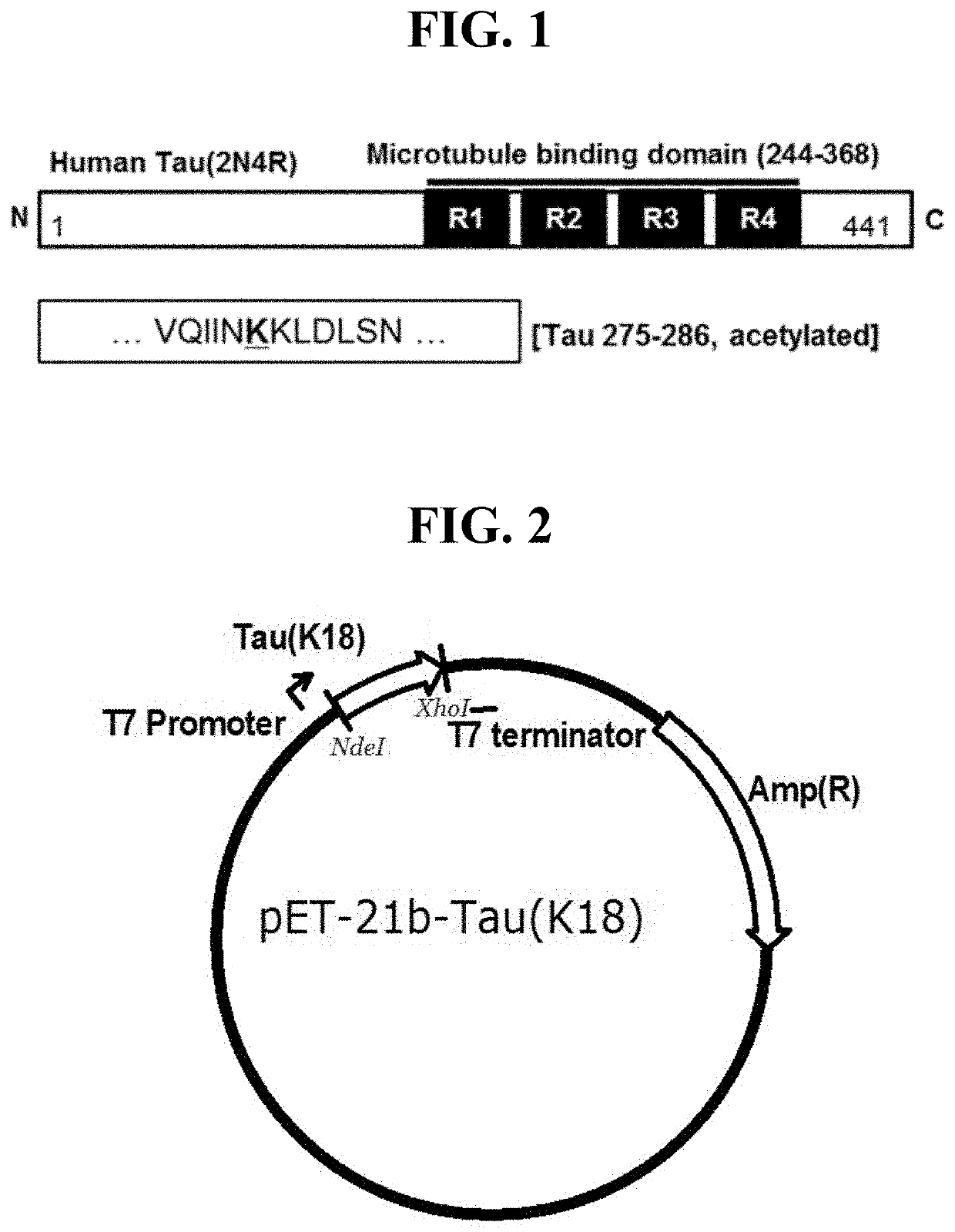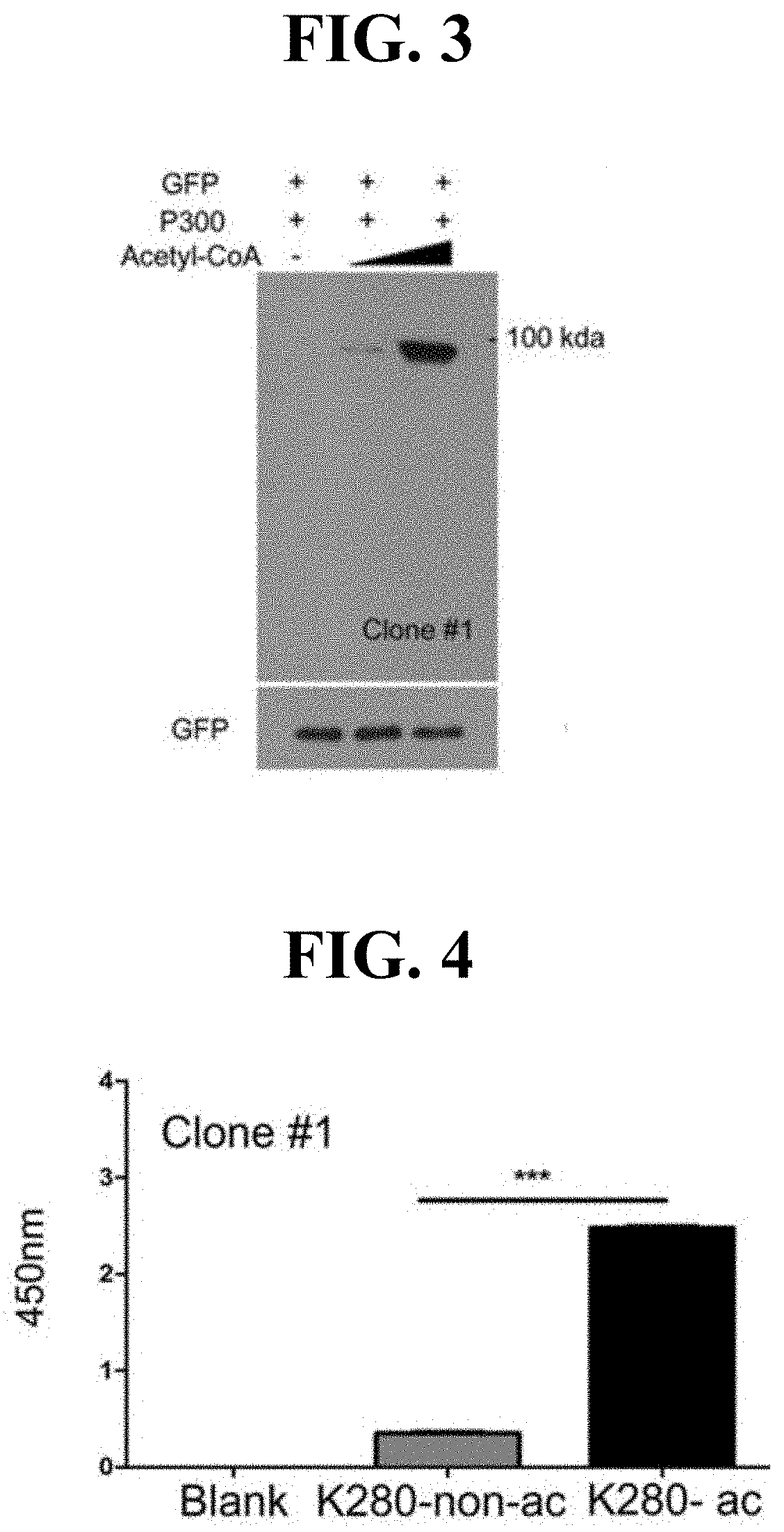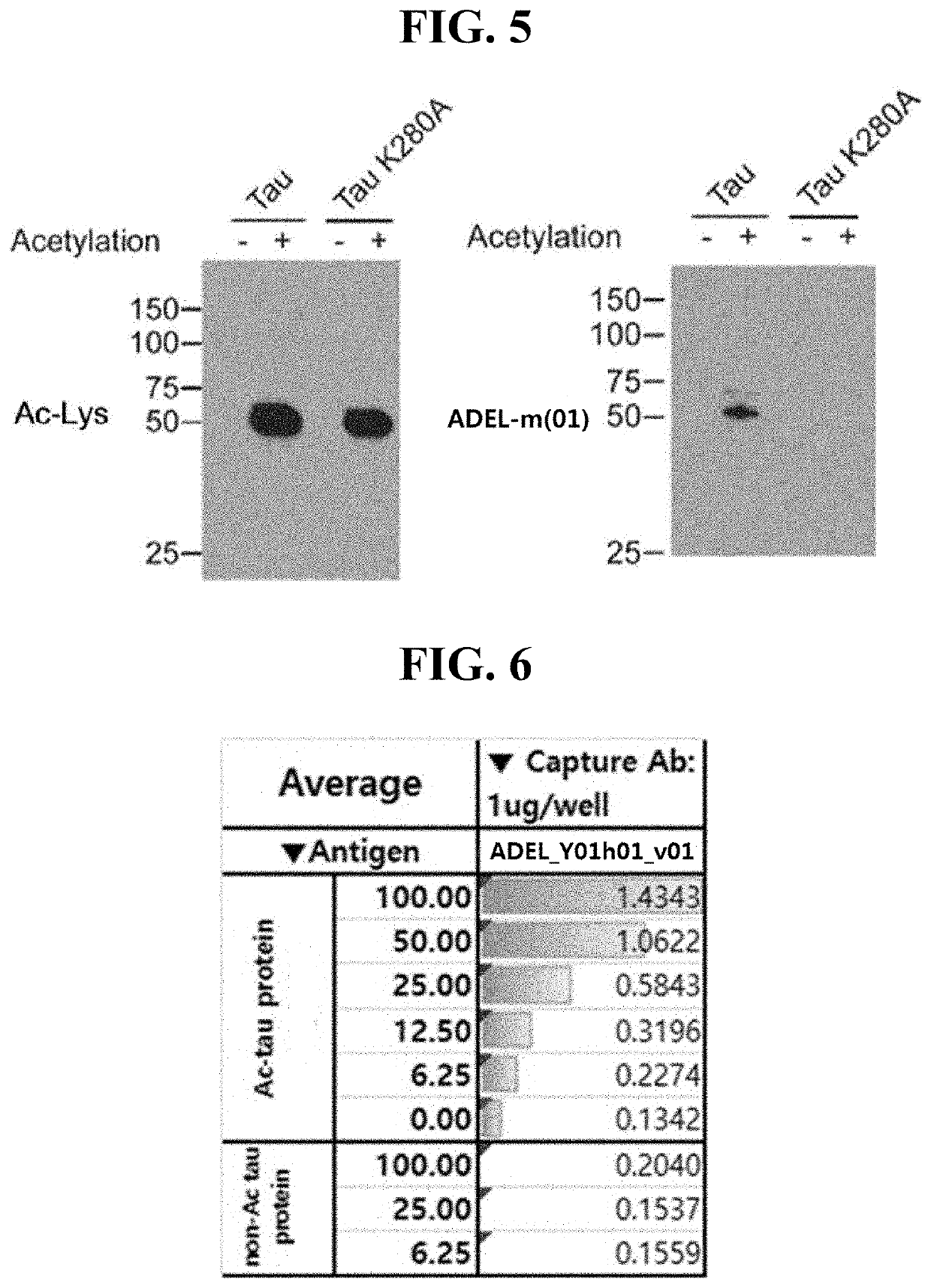Anti-tau antibody and use of same
- Summary
- Abstract
- Description
- Claims
- Application Information
AI Technical Summary
Benefits of technology
Problems solved by technology
Method used
Image
Examples
preparation example 1
ed Tau Protein Fragments
[0163]In order to prepare modified tau protein fragments, in the amino acid sequence of the tau protein (2N4R) which consists of 441 amino acids, tau protein fragments, which act in pathogenesis of Alzheimer's disease and show a cognitive function-improving effect upon active immunization of a tau gene-modified mouse model, were selected. As illustrated in FIG. 1, in the amino acid sequences of the tau protein fragments located in the microtubule-binding domain, a section consisting of 12 amino acids was designated.
[0164]Specifically, the protein fragment which has, in the wild type tau protein amino acid sequence of SEQ ID NO: 25, the 275th to 286th amino acid sequence section, with the 280th amino acid acetylated, was designated as K280-ac. The K280-ac protein fragment was produced by requesting Peptron Inc. to produce the same.
[0165]In addition, a K280-ac protein fragment with keyhole limpet hemocyanin (KLH) bound at the N-terminus was produced by requesti...
preparation example 2
dy Binding to Modified Tau Protein Fragment
[0174]An antibody that specifically binds to the K280-ac protein fragment prepared in Preparation Example 1 was produced by requesting AbFrontier, a South Korean mouse monoclonal antibody development company, to produce the same. B lymphocytes obtained by injecting the K280-ac protein fragment as an antigen into mice were produced as hybridoma cells. Thereafter, a cell line producing antibodies that specifically bind to the K280-ac protein fragment was screened through ELISA. In addition, phage display library screening was conducted by antibody development researchers at universities in South Korea, to develop antibodies that specifically bind to the K280-ac protein fragment.
[0175]As a result, one mouse hybridoma cell line (mouse hybridoma cell line) was finally selected, and candidates selected through the phage display library screening were excluded because they produce antibodies having a lower affinity than the mouse hybridoma cell li...
experimental example 1
gen Specific Binding
[0179]In order to identify specific binding of the ADEL-Y01m antibody prepared in Preparation Example 2 to acetylated tau protein, the wild-type tau protein and the tau protein (Tau K280A) in which the 280th amino acid lysine is replaced with alanine were acetylated in vitro. Here, acetylation of the wild-type Tau protein and the Tau K280A protein was performed in the same manner as in the preparation method of the acetylated K18 protein fragment in Preparation Example 1. Then, an antigen-antibody specific binding reaction of the ADEL-Y01m antibody was checked through western blotting.
[0180]First, the concentrations of the wild-type Tau protein and the Tau K280A protein were measured through Bradford Assay. Each of the proteins was mixed with 4× sample buffer (60 mM Tris-HCl [pH 6.8], 2% w / v SDS, 25% v / v glycerol, 14.4 mM v / v β-mercaptoethanol, and bromophenol blue). Thereafter, each protein was electrophoresed on an SDS-PAGE gel. Then, the electrophoresed gel wa...
PUM
| Property | Measurement | Unit |
|---|---|---|
| Length | aaaaa | aaaaa |
| Light | aaaaa | aaaaa |
| Aggregation | aaaaa | aaaaa |
Abstract
Description
Claims
Application Information
 Login to View More
Login to View More - R&D
- Intellectual Property
- Life Sciences
- Materials
- Tech Scout
- Unparalleled Data Quality
- Higher Quality Content
- 60% Fewer Hallucinations
Browse by: Latest US Patents, China's latest patents, Technical Efficacy Thesaurus, Application Domain, Technology Topic, Popular Technical Reports.
© 2025 PatSnap. All rights reserved.Legal|Privacy policy|Modern Slavery Act Transparency Statement|Sitemap|About US| Contact US: help@patsnap.com



